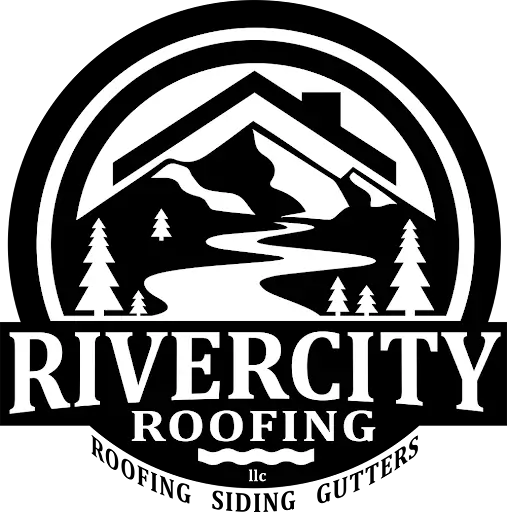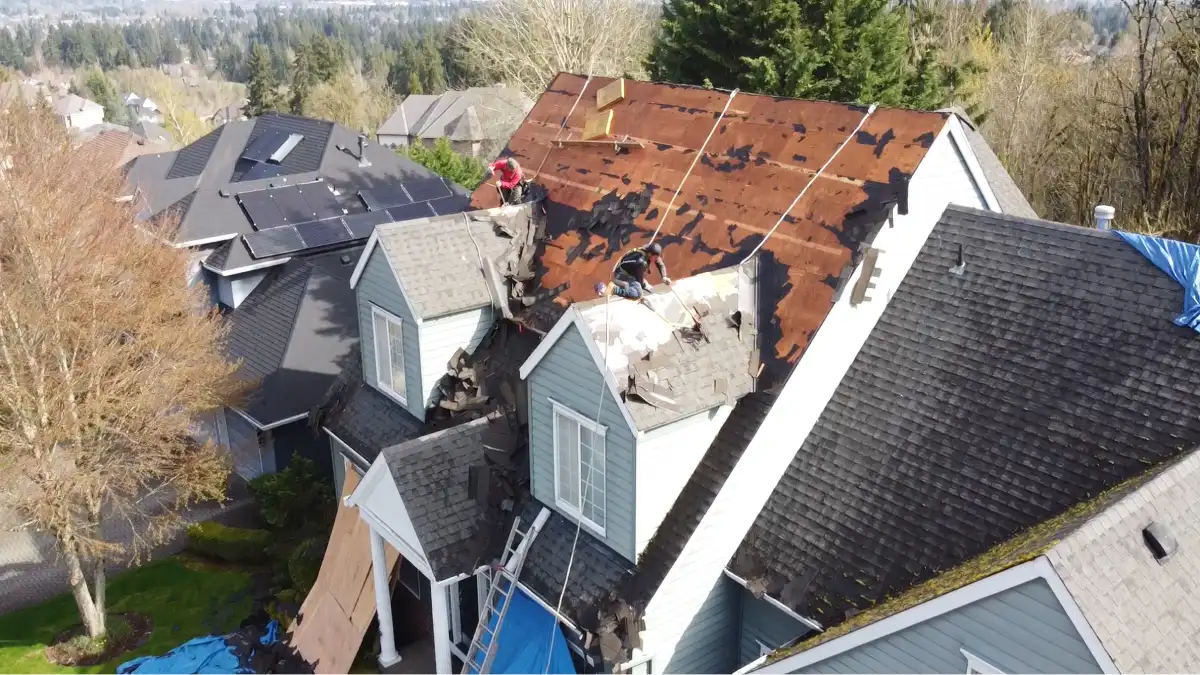When it comes to roofing projects, choosing the right roofing materials is crucial. One of the most important decisions homeowners face is determining what is the best roof decking material. This essential component provides the foundation for the entire roofing system, playing a vital role in the structure’s stability and longevity.
Selecting the ideal roof decking involves weighing various factors such as cost-effectiveness, energy efficiency, and ease of installation. Different deck roof materials offer unique advantages and drawbacks, making the decision process complex. This article will explore popular deck roofing options, compare their pros and cons, and provide insights to help homeowners make an informed choice for their roof replacement or new construction projects.
Understanding Roof Decking
Definition
Roof decking, also known as roof sheathing, is a crucial component of any roofing system. It’s the layer of material installed directly on top of the roof’s structural supports, such as trusses or rafters. Different roof decking materials, such as plywood or oriented strand board (OSB), affect the durability, longevity, and performance of roofs, making it essential to consult an expert on the best options for specific buildings or homes.
Typically made from materials like plywood or oriented strand board (OSB), roof decking serves as the backbone of the entire roofing structure. It creates a rigid, level surface that supports the weight of the roof and any additional loads, such as snow or wind.
Importance
The importance of roof decking cannot be overstated. It plays several critical roles in the overall performance and longevity of a roof:
- Structural Support: Roof decking distributes the weight of roofing materials evenly across the roof’s framework, preventing excessive stress on any one area.
- Stability and Rigidity: When securely fastened, it adds stability to the entire roofing system, helping it resist external forces like wind and impact.
- Moisture Protection: Acting as a secondary defense against moisture intrusion, properly installed decking helps prevent water from seeping into the underlying structure.
- Energy Efficiency: Roof decking can improve a building’s energy efficiency by providing an additional layer of insulation.
- Base for Roofing Materials: It offers a smooth, even surface for the installation of roofing materials, ensuring their proper alignment and secure attachment.
Types
There are several types of roof decking materials and installation methods:
- Plywood: Made of multiple layers of thin wood veneers, plywood offers strength and moisture resistance.
- Oriented Strand Board (OSB): Composed of compressed wood strands bonded with adhesive resins, OSB is a cost-effective alternative to plywood.
- Tongue and Groove: This method uses boards with a “tongue” on one edge that fits into a “groove” on the adjacent board, creating a tight, durable surface.
- Solid Sheathing: This method provides a continuous surface underneath the roofing material, suitable for built-up roofing and composition roofing.
- Open Sheathing: Also known as skip sheathing, this method leaves spaces between boards, allowing for ventilation in certain roofing materials like wood shingles and shakes.
Plank decking is a traditional type of roofing structure made up of elongated wooden boards, commonly used in older homes.
Sheet decking, on the other hand, is made from flat, rectangular sheets, commonly using materials like plywood or OSB.
Proper installation and maintenance of roof decking are essential to ensure a long-lasting, sturdy roof that can withstand harsh outdoor elements. The choice of decking material and installation method can significantly impact the overall durability and performance of the roof.
Comparing Popular Roof Decking Materials
Plywood vs OSB
Plywood roof decking and Oriented Strand Board (OSB) are two common materials used for roof decking. Both provide a stable base for roofing materials, but they have distinct characteristics.
Plywood consists of thin wood veneers stacked perpendicular to each other, while OSB is made from wood strands aligned and pressed together. This structural difference gives plywood better moisture resistance and stability due to its cross-grain construction.
When it comes to cost, OSB is generally more budget-friendly, making it a popular choice for smaller residential projects. However, plywood’s superior moisture resistance makes it preferable in humid or wet climates.
Plywood also has an edge in strength and stability. Its construction allows for better resistance to bending and sagging under heavy loads, making it suitable for larger or steep-slope roofs. This characteristic is particularly important in regions prone to severe weather conditions.
Metal Roof Decking vs Wood-based Options
Metal decking offers unique advantages compared to wood-based options like plywood and OSB. Metal roofs are known for their durability, longevity, and energy efficiency.
One of the main benefits of metal roofing is its ability to reflect heat, keeping homes cooler in summer. This can lead to lower energy bills. Metal roofs also have a higher R-value, providing better insulation.
In terms of lifespan, metal roofs can last for decades with minimal maintenance. They’re also highly resistant to extreme weather conditions, capable of withstanding winds up to 140 mph.
From an environmental perspective, metal roofs are often considered more eco-friendly. They can be installed over existing roofs, reducing waste, and are made from 35-95% recycled materials. At the end of their lifespan, metal roofs are 100% recyclable.
However, metal roofs come with a higher initial cost compared to wood-based options. While this upfront investment is significant, the long-term savings on energy bills and replacement costs can offset the initial expense.
Factors to Consider When Choosing Roof Decking
Climate
The climate plays a crucial role in selecting the right roof decking material. Different regions experience varying weather conditions, which can significantly impact the performance and longevity of the decking. In dry and hot climates, materials that can withstand intense sunlight and heat without absorbing too much of it are ideal. Metal roofing, for instance, reflects sunlight and keeps homes cooler.
For wet and rainy climates, water-resistant materials are essential. Composite decking provides significant resistance to moisture, making it less prone to mold and mildew growth compared to pure wood. However, proper drainage is crucial to prevent water pooling.
In areas with fluctuating temperatures, materials that can handle expansion and contraction are necessary. Composite decks show reduced expansion and contraction in response to temperature changes, ensuring a longer-lasting and stable deck.
Roof Decking Cost
Sticking to a budget is a key consideration when evaluating roof decking cost. Fortunately, there are affordable options available that meet various needs without breaking the bank. Oriented Strand Board (OSB) is generally more budget-friendly than plywood, making it a popular choice for smaller residential projects.
While metal roofing comes with a higher initial cost, it can lead to long-term savings on energy bills and replacement costs. Careful research and price comparison can help homeowners find a common roof decking material that fits their budget and requirements.
Durability
Durability is a critical factor in selecting roof decking. Homeowners should look for materials known for their longevity and minimal maintenance requirements. Investing in durable materials can save future headaches and expenses.
Plywood, for example, offers strength and moisture resistance. It typically swells when wet but returns to its normal size once dried, without negatively impacting outer roofing materials. OSB, while cheaper, takes longer to dry out and may degrade faster when exposed to water over time.
Concrete sheathing is another durable option that holds up well in harsh weather conditions and is considered low-maintenance. It’s increasingly being used in green building projects as a non-wood alternative.
By carefully considering these factors – climate, budget, and durability – homeowners can make an informed decision about the best roof decking option for their specific needs and circumstances.
Conclusion
Choosing the right roof decking material has a significant impact on the overall performance and longevity of a roofing system. The decision involves weighing factors such as climate, budget, and durability. Each option, from plywood and OSB to metal roofing, comes with its own set of advantages and drawbacks. Homeowners should carefully consider their specific needs and circumstances to make an informed choice.
Ultimately, the best roof decking option depends on individual requirements and local conditions. While budget-friendly materials like OSB might be suitable for some projects, others may benefit from the durability and energy efficiency of metal roofing. To ensure the best outcome, it’s advisable to consult with a professional roofing contractor. For expert advice and top-notch roofing services, reach out to River City Roofing Today.
FAQs
Oriented Strand Board (OSB) is widely favored for roof decking due to its robustness, consistent quality, and cost-efficiency.
The significant concern with roof decks is their heavy weight and the load they place on structures. Many attics and flat roofs aren’t built to bear the weight of a deck, which can lead to structural stress and potential damage.
In areas susceptible to hail, plywood is often preferred over OSB. Plywood offers better impact resistance and structural integrity, making it a safer choice for regions with severe weather conditions.
The weakest attachment method for a roof deck is using toe nails. In contrast, double wraps provide the strongest attachment, offering greater stability and security.



Comments are closed